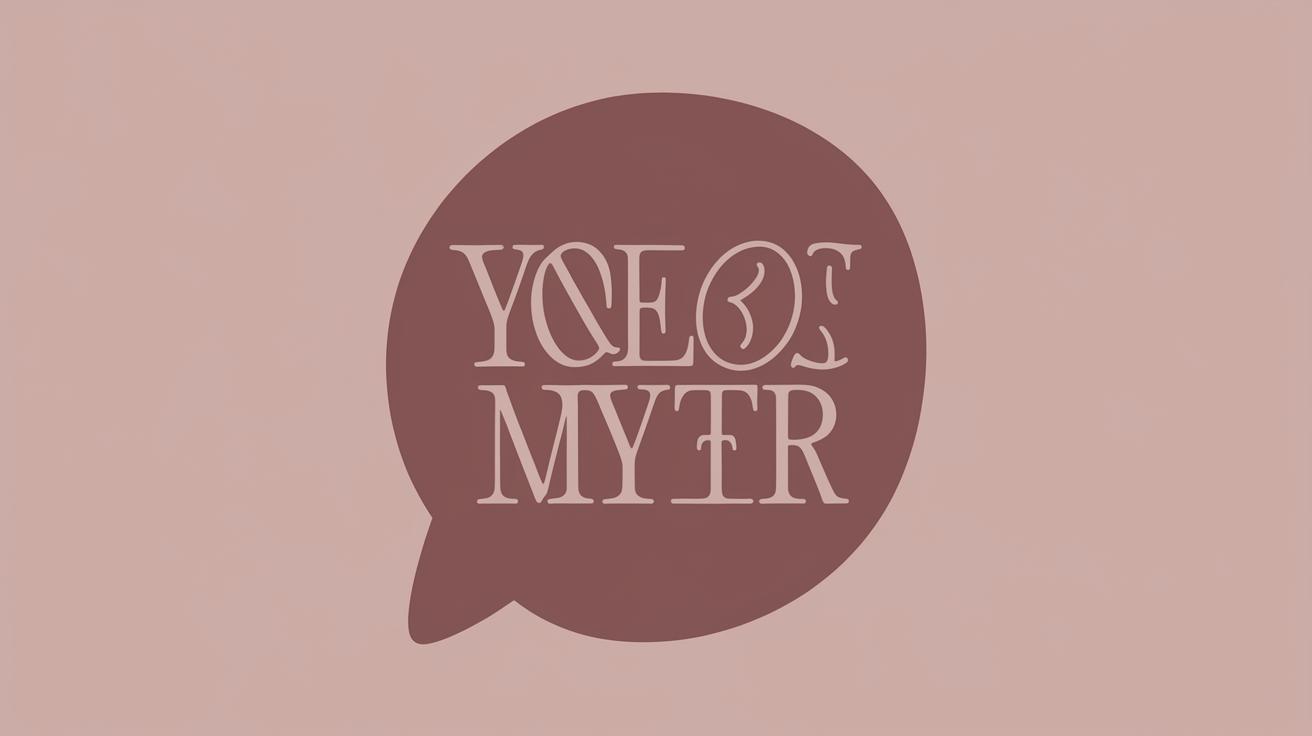Using Typography to Enhance a Brand: A Comprehensive Guide
Typography is a fundamental element of brand design, subtly influencing how consumers perceive a brand. This blog post explores how typography can enhance a brand’s image, starting with an understanding of different fonts and their characteristics. It delves into the role of brand identity and consistency in typography and offers essential techniques for selecting the right typefaces. This includes matching typeface characteristics with brand identity and seeking inspiration. We will also discuss current trends in typographic logo design, emphasizing minimalism, customization, and uniqueness. Through expert insights and practical examples, this article aims to guide you in creating a cohesive and compelling brand identity using typography. Finally, we present a real-world application of these principles in a brand logo design case study.
Understanding Typography in Logo Design
Different Fonts And Their Characteristics
Fonts are the building blocks of typography and can dramatically alter the perception of a brand. They are categorized into several types like serif, sans-serif, script, and decorative, each carrying distinct characteristics that evoke specific emotions and associations. Serifs convey tradition and reliability, while sans-serif fonts suggest modernity and simplicity. Understanding these subtleties is crucial for effective logo design.
The characteristics of fonts also extend beyond their category. Factors like weight, width, and slant contribute to the nuances of how a typeface projects brand values. For instance, lightweight fonts are often perceived as elegant and delicate, while bold fonts appear strong and assertive. Carefully choosing fonts that align with your brand’s personality can reinforce the brand message and create an instantly recognizable logo.
Typeface Persona in Practice
The persona of a typeface is crafted through a combination of its aesthetic and how it complements the brand’s voice. For instance, a tech startup aiming to be approachable might use playful, rounded typefaces that suggest innovation and friendliness. In contrast, a high-end fashion brand might opt for elegant script fonts that exude luxury and exclusivity.
Combining typeface personas with brand voice helps create a holistic brand identity. It’s this alignment that ensures the brand resonates with its target audience. By understanding how typefaces communicate on a subconscious level, designers can effectively use typography to convey a specific mood or message, making it a powerful branding tool.
Brand Identity and Consistency
Elements of Typography in Logo Design
A logo is often the first touchpoint of a brand, and typography plays a crucial role in its design. Key elements include font choice, spacing, and alignment. A well-designed typographic logo should be distinct, easily readable, and scalable across different media.
Consistency in typography extends beyond a logo to other brand material like websites, business cards, and advertisements. Maintaining uniformity in typographic elements ensures cohesiveness across all brand interactions. This consistent use of typography reinforces brand recognition and trust, making it a crucial aspect of brand identity.
Essential Techniques for Selecting Typefaces
Matching Typeface Characteristics with Brand Identity
Choosing the right typeface involves careful consideration of how a font’s characteristics align with a brand’s identity. This process requires an in-depth understanding of the brand’s core values, mission, and the emotions it aims to evoke in its audience. For example, a brand that values precision and professionalism might lean towards clean and classic sans-serif fonts.
The process of matching typeface characteristics with brand identity also involves considering the industry and cultural context. A font that works well for a tech brand might not be suitable for a children’s brand. By ensuring that typefaces are aligned not only with the brand’s identity but also its broader context, designers can create a more accurate representation of the brand.
Inspiration
Seeking inspiration from various sources can be an invaluable step in selecting typefaces. Examining successful brands and how they use typography can provide insights into effective design strategies. Online resources, design trends, and typographic showcases can also serve as excellent starting points for inspiration.
While inspiration is essential, originality should not be sacrificed. Designers should strive to create unique typographic solutions that reflect the brand’s unique qualities, balancing inspiration with innovation to produce a compelling typographic identity.
Trust the Crowd
Involving others in the typeface selection process can provide valuable feedback and insights. Conducting surveys or focus groups with members of the target audience can reveal how they perceive different typefaces and their effectiveness in conveying the intended brand message.
This feedback not only ensures that the chosen typography resonates with the audience but also helps in identifying potential issues or misinterpretations. Collaboration with other designers or branding experts can further refine typographic choices, resulting in a well-rounded and cohesive brand identity.
Two’s Company, Three’s a Crowd
While variety can enhance a design, using too many typefaces in a single brand identity can lead to confusion and a lack of cohesion. A good rule of thumb is to use two complementary typefaces: one for headings and one for body text. This approach keeps the design uncluttered and maintains a consistent appearance across all brand materials.
Choosing two typefaces that contrast yet complement each other can create visual interest while ensuring clarity and readability. By maintaining this balance, brands can effectively use typography to enhance their identity without overwhelming the audience.
Let’s Build a Brand Logo
Company Briefing
Consider a new eco-friendly skincare brand seeking a logo that conveys naturalness and purity. The brand wants to appeal to environmentally-conscious consumers aged 20-35 who value health and sustainability. The design brief emphasizes a desire for a simple, modern look that represents their commitment to using natural ingredients.
Based on the briefing, type choices might include a crisp, clean sans-serif font, which suggests purity and modernity, possibly paired with a gentle, organic script font to highlight the natural aspect. Colors could include earthy tones, reinforcing the brand’s environmental focus. By synthesizing these design elements, a logo can effectively communicate the brand identity to its target audience.
Expert Insights and Trends in Typographic Logo Design
Functional and Aesthetic Considerations
Contemporary logo design demands a balance between functionality and aesthetics. An effective logo must not only be visually appealing but also functional across various applications. It should maintain clarity at small sizes and adapt seamlessly to digital and print formats.
Designers must consider these functional aspects when selecting typography. Aesthetic considerations should not compromise readability or versatility. Using scalable, legible typefaces ensures the logo remains effective, regardless of medium or size.
Brand Identity
The typeface selected for a logo becomes a vital component of the brand’s identity. It communicates the brand’s essence and differentiates it from competitors. As such, designers must ensure that typography aligns with the brand’s personality, mission, and values.
This alignment extends to maintaining consistency across all branding materials. Ensuring a unified typographic identity across platforms reinforces brand recognition and establishes a coherent visual language that resonates with the audience.
Trends
Current trends in typographic logo design emphasize simplicity and functionality. Brands are moving towards minimalistic designs that focus on clarity and impact. This approach aligns with the broader trend towards clean, uncluttered visual communication.
Another trend is the use of bespoke or custom-designed typefaces. Custom typography allows brands to distinguish themselves further, offering a unique visual element that can’t be replicated by competitors. This trend underscores the shift towards typography as a proactive strategic tool in brand differentiation.
Minimalism and Simplicity
Minimalism in typography involves stripping away unnecessary elements to focus on the core message. A minimalist approach can create a timeless design that remains relevant even as trends evolve. This simplicity emphasizes the importance of every chosen element, including typefaces, colors, and other graphical components.
Simplicity also ties into the need for logos to be versatile and adaptable. A simple, uncluttered design ensures effectiveness across various platforms, maintaining clarity and impact wherever the brand appears.
Customization and Uniqueness
Customization in typography can include altering existing typefaces or developing entirely new ones tailored to a brand’s specific needs. This approach ensures the brand stands out and enhances the overall distinctiveness of its identity.
By investing in customized typography, brands can create a memorable and unique visual language that embodies their values and mission. This distinctiveness aids in establishing a lasting impression, fostering consumer recognition and loyalty.
Summary of main points
| Key Section | Main Points |
|---|---|
| Understanding Typography | Explored different fonts and characteristics, and how typeface personas can be aligned with brand voice. |
| Brand Identity & Consistency | Discussed the importance of consistent typography in logos and brand materials for enhanced brand recognition. |
| Selecting Typefaces | Provided techniques for choosing typefaces that match brand identity, drawing inspiration, and maintaining simplicity. |
| Building a Brand Logo | Described the process of designing a logo for an eco-friendly skincare brand. |
| Expert Insights & Trends | Highlighted the need for functional, aesthetic considerations, and current trends focusing on minimalism and uniqueness. |


